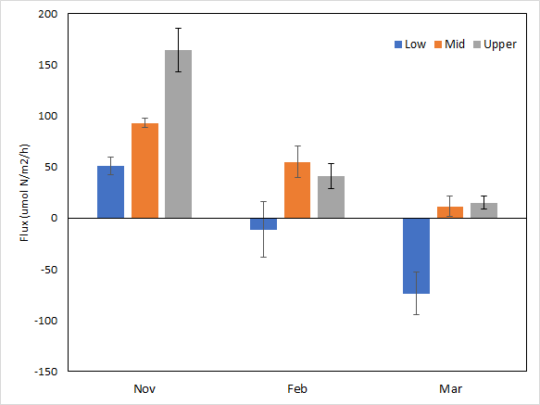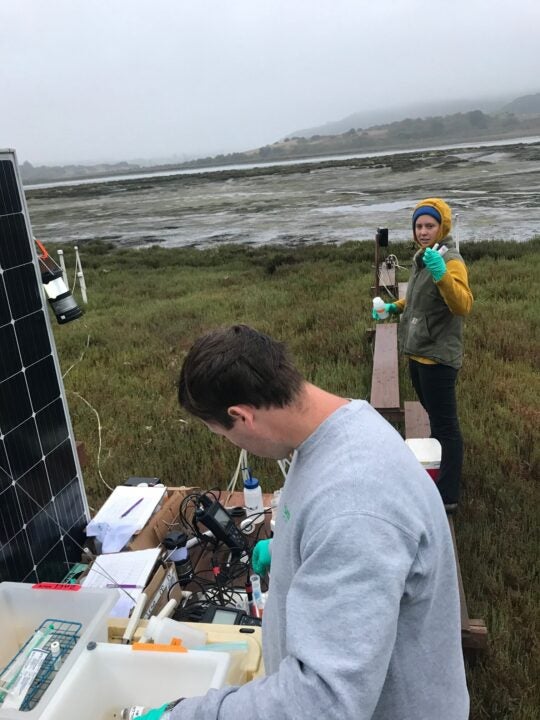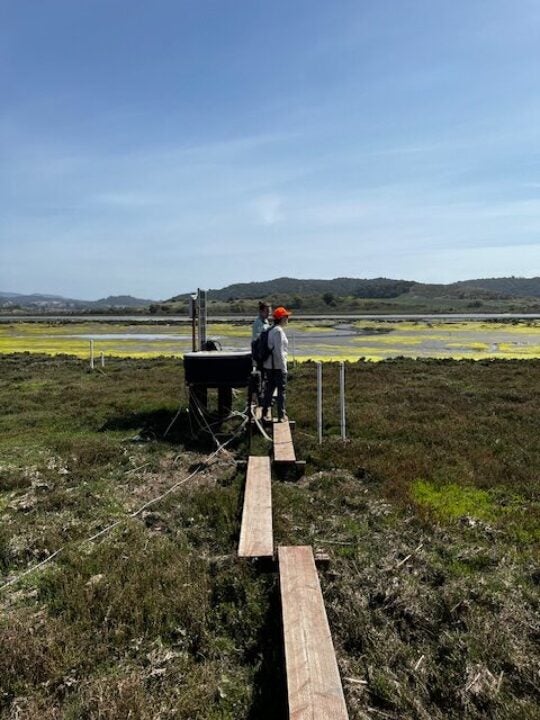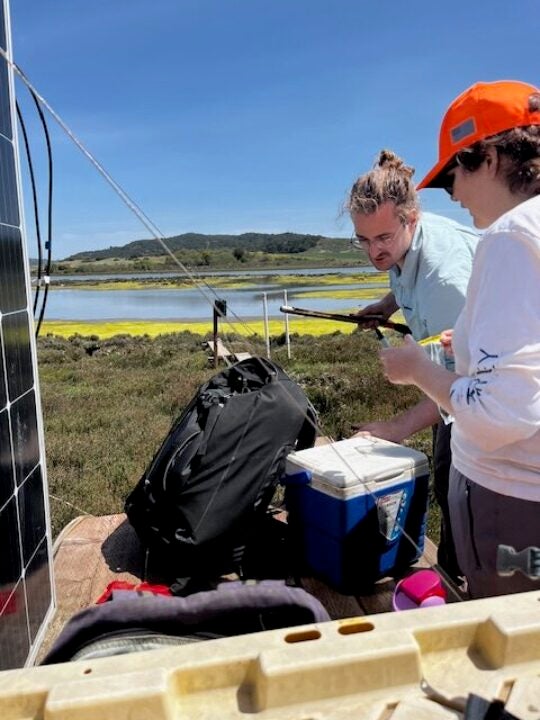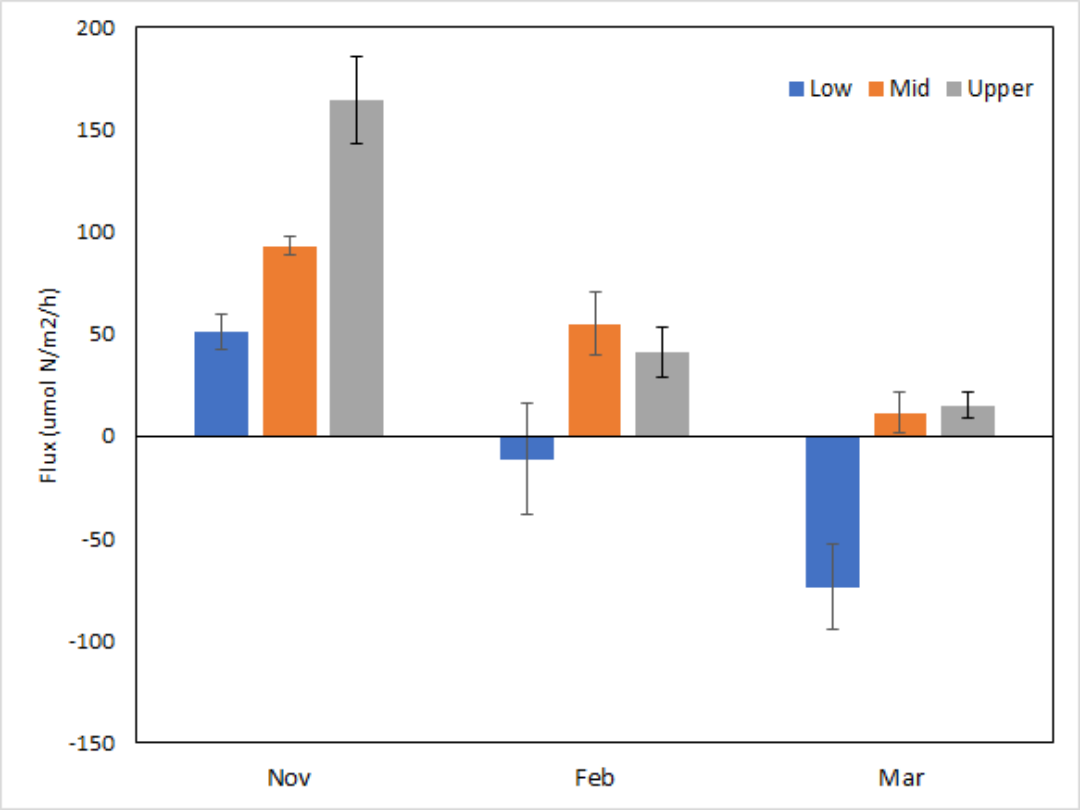Managing ground and surface waters together to limit pollution
Past research has revealed that impaired water quality in Elkhorn Slough—California’s third-largest estuary and a National Estuarine Research Reserve (NERR)—is linked to salt marsh loss and decreased flatfish production within the estuary and catch offshore. The region’s Water Quality Control Board is working with agricultural farmers and scientists to better understand these pollution issues and is actively seeking solutions. However, comprehensive studies of how nutrient pollution moves through this system are lacking. University of Southern California (USC) Sea Grant funded a study to quantify the extent to which nutrient removal and transport processes occur naturally in this salt marsh system.
Key Results:
- Results show that ocean tides dominate the salt marsh hydrology and biogeochemistry in the dry growing season (summer) and that freshwater inputs mix with tidal inputs during the wet dormant season (winter)
- The hydrological model of Elkhorn Slough is complete; the biogeochemical model to understand how nutrients move throughout groundwater and the water-sediment interface is underway; pollution modeling is underway
- Researchers predict that as sea levels continue to rise, increased inundation and salinity will reduce plant productivity at higher marsh elevations, decreasing the marsh’s ability to serve as a sink for terrestrial nitrogen
Project Impacts & Application:
- Hosted a public workshop in collaboration with Elkhorn Slough NERR staff in June 2023
- Presented at the American Geophysical Union Meeting, Coastal and Estuarine Research Federation Conference, and Goldschmidt Conference
- Organized an undergraduate research course where students partnered with Elkhorn Slough National Estuarine Research Reserve to identify regional water quality needs
- Began collaborating with the Department of Energy’s Lawrence Berkeley National Lab for data analysis
- Results were shared with the Central Coast Water Board who are interested in the results to help create a Total Maximum Daily Load (TMDL) for Elkhorn Slough.
- Results were also shared with the United States Geological Survey and a variety of academic audiences.
Principal Investigator:
Margaret Zimmer, Ph.D., University of California Santa Cruz
Funding:
California Ocean Protection Council, 2018-2021
Additional Info:
http://mzimmer.weebly.com/nitrates.html
- Grande, E., Arora, B., Visser, A., Montalvo, M., Braswell, A., Seybold, E., Tatariw, C., Beheshti, K. and Zimmer, M., 2022. Tidal frequencies and quasiperiodic subsurface water level variations dominate redox dynamics in a salt marsh system. Hydrological Processes, 36(5), p.e14587.
- Grande, E., Visser, A., Oerter, E., Arora, B., Seybold, E.C., Tatariw, C., Braswell, A., Montalvo, M. and Zimmer, M., 2023. Flow directions and ages of subsurface water in a salt marsh system constrained by isotope tracing. Estuaries and Coasts, 46(6), pp.1417-1437.
- Grande, E., Seybold, E.C., Tatariw, C., Visser, A., Braswell, A., Arora, B., Birgand, F., Haskins, J. and Zimmer, M., 2023. Seasonal and tidal variations in hydrologic inputs drive salt marsh porewater nitrate dynamics. Hydrological Processes, 37(8), p.e14951.
Access our Publications Database to view publications from this project or other related topics
